cyber-physical system
description: engineered systems built and operated with seamless integration between physical components and computation
15 results
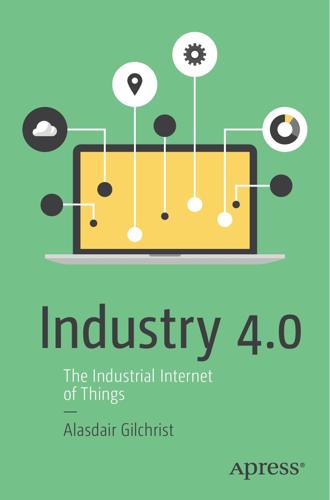
Industry 4.0: The Industrial Internet of Things
by
Alasdair Gilchrist
Published 27 Jun 2016
This distinguishes between microprocessor based embedded systems and more complex information processing systems that actually integrate with their environment. A precise definition of cyber-physical systems (CPS) is that they are integrations of computation, networking, and physical processes. Embedded computers and networks monitor and control the physical processes, with feedback loops where physical processes affect computations and vice versa. Therefore, a cyber-physical system can be just about anything that has integrated computation, networking, and physical processes. A human operator is a cyber-physical system and so is a smart factory. For example, a human operator has physical and cyber components.
…
The availability of these development kits has accelerated the design process, by allowing the production of proof-of-concept (PoC) models. They have driven innovation in the way we deploy multi-sensor devices into industrial system automation and integrate M2M with cyber-physical systems to create Industrial Internet of Things environments. Cyber Physical Systems (CPS) The Industrial Internet has come about due to the rapid advancements in digital computers in all their formats and vast improvements in digital communications. These disciplines are considered separate domains of knowledge and expertise, with there being a tendency for specialization in one or the other.
…
Therefore, it is necessary to identify early in the design process whether the product is to be an IT, network, or a physical system–or a system that has all three, physical, network, and digital processing features. If it has, then it is said to be a cyber-physical system. In some definitions, the networking and communications feature is deemed optional, although that raises the question as to how a CPS differs from an embedded system. Information systems, which are embedded into physical devices, are called “embedded systems”. These embedded systems are found in telecommunication, automation, and transport systems, among many others. Lately, a new term has surfaced, the cyber-physical systems (CPS). This distinguishes between microprocessor based embedded systems and more complex information processing systems that actually integrate with their environment.
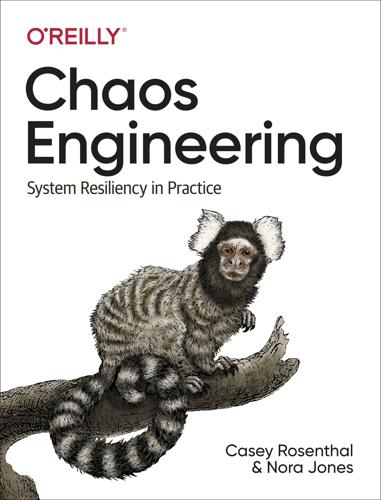
Chaos Engineering: System Resiliency in Practice
by
Casey Rosenthal
and
Nora Jones
Published 27 Apr 2020
-A Simple System Is the Tip of the Iceberg Cyber-Physical Systems (CPS), The Rise of Cyber-Physical Systems defined, Setting the Stage Economic Pillars of Complexity model, Economic Pillars of Complexity-Economic Pillars of Complexity Applied to Software embracing complexity, Embracing Complexity essential complexity in, Essential Complexity evolution of CI, CD, and CV, Continuous Verification examplesbusiness and application logic mismatch, Example 1: Mismatch Between Business Logic and Application Logic-Example 1: Mismatch Between Business Logic and Application Logic customer-induced retry storm, Example 2: Customer-Induced Retry Storm-Example 2: Customer-Induced Retry Storm holiday code freeze, Example 3: Holiday Code Freeze-Example 3: Holiday Code Freeze experimentation versus testing in, Where CV Comes From increase in, Contemplating Complexity navigating, Navigating Complex Systems-The Systemic Perspective principles of failure in, Organizations Are a System of Systems reducing/eliminating complexity in, Confronting Complexity, Essential Complexity role of Chaos Engineering in, Setting the Stage, Encountering Complex Systems simple versus complex systems, Contemplating Complexity-Contemplating Complexity confidence-building techniquesapproach of Chaos Engineering, The Why, How, and When of Experiments context-dependent nature of, The How continuous delivery (CD), The Why in real-world settings, People in the Loop irony of introducing more automation, People in the Loop timing of, The When configuration deploys, Impossibility Result Conklin, Todd, Spotting Weak Signals consistency, A Real-World Example continuous delivery (CD), The Why, Where CV Comes From continuous integration (CI), Where CV Comes From continuous verification (CV)Chaos Automation Platform (ChAP)application of Advanced Principles, The Advanced Principles in ChAP benefits of, ChAP as Continuous Verification overview of, CV in the Wild: ChAP running experiments, ChAP: Running Experiments selecting experiments, ChAP: Selecting Experiments for correctness, Correctness for data artifacts, Data Artifacts defined, Where CV Comes From evolution of, Where CV Comes From-Where CV Comes From issues addressed by, Where CV Comes From for performance testing, Performance Testing similarity to CI/CD, Evolution, Where CV Comes From types of systems, Types of CV Systems Cook, Richard, Organizations Are a System of Systems correctness, continuous verification for, Correctness Crowley, Richard, Principles in Action, Slack’s Disasterpiece Theater-Conclusion Customer Resource Definition (CRD) , Conclusion Cyber-Physical Systems (CPS)Chaos Engineering as a step beyond FMEA, Chaos Engineering as a Step Beyond FMEA-Chaos Engineering as a Step Beyond FMEA Functional Safety standards, Functional Safety Meets Chaos Engineering-FMEA and Chaos Engineering probe effect, Probe Effect-Addressing the Probe Effect rise of, The Rise of Cyber-Physical Systems software in, Software in Cyber-Physical Systems-Software in Cyber-Physical Systems cybersecurity (see Security Chaos Engineering (SCE)) D Dapper, Observability: The Opportunity dark debt, Putting the “Socio” in Sociotechnical Systems data integrity, Data integrity, Human Factors and Failure databasesapplying Chaos Engineering to, Evolution continuous verification of data artifacts, Data Artifacts datacenter operations, Datacenter operations, Scope of Tests at Google Dekker, Sidney, Engineering Adaptive Capacity, The hypothesis dependenciesalternating between variables, Expanding Variation to Dependencies automated testing and, Automate Experiments to Run Continuously collecting information with Monocle, ChAP: Selecting Experiments considering failures and cascading failures, Explore Dependencies health checks and, Design Patterns Common in Newer Systems hidden, Google DiRT: Disaster Recovery Testing running without in disaster testing, Run without dependencies DiRT (Disaster Recovery Testing) programDiRT curse, Gathering Results disaster testing guidelines, The Rules of Engagement-Treat disaster tests as you would actual outages founding of, Google DiRT: Disaster Recovery Testing gathering results, Gathering Results growth of, Google DiRT: Disaster Recovery Testing how to test, How to Test-How to Test overview of, Life of a DiRT Test value of, Principles in Action what to test, What to Test-Reboot everything disaster testingbenefits of , Google DiRT: Disaster Recovery Testing, Scope of Tests at Google guidelines for, The Rules of Engagement-Treat disaster tests as you would actual outages Disasterpiece Theater programchecklists, Preparation, The Exercise debriefing, Debriefing evolution of, How the Process Has Evolved exercise initiation, The Exercise getting management buy-in, Getting Management Buy-In goals and anti-goals, Goals lessons learned, Results-Impossibility Result preparation, Preparation distributed systemschallenges of securing, The Case for Security Chaos Engineering human-distributed systems, Communication: The Network Latency of Any Organization leadership properties of, Leadership Is an Emergent Property of the System movie streaming service example, Example 2: Customer-Induced Retry Storm-Example 2: Customer-Induced Retry Storm network latency in, Communication: The Network Latency of Any Organization role of Chaos Engineering in, Formalizing the Discipline, Why Do We Need Chaos Engineering?
…
., performing Failure Mode and Effects Analysis) Where Functional Safety practices leave a lot of room for improvement with respect to the new generations of software-intensive systems currently being developed Where Chaos Engineering principles can be applied to fill those gaps to enable engineers to safely push the boundaries of technology while chasing the next great breakthrough innovations We consider these topics within the context of cyber-physical systems. The Rise of Cyber-Physical Systems There are many ecosystems unfamiliar to most software engineers where software is still the centerpiece driving innovation. Cyber-physical systems (CPSs) comprise one such ecosystem. A CPS is an interconnected hardware-software system that is deployed into, and interacts with, the physical world around it. Examples of such systems range from avionics systems or autonomous vehicles to traditional operational technology deployments like industrial control systems in a chemical refinery.
…
ChaoSlingr framework, Example Security Chaos Engineering Tool: ChaoSlingr-The Story of ChaoSlingr ChAP (see Chaos Automation Platform (ChAP)) Chockaiyan, Raji, Principles in Action, Capital One Adoption and Evolution of Chaos Engineering-Conclusion clinical trials, The Future of “The Principles” cluster management systems, Scope of Tests at Google cognitive interviews, Effectively Partnering Internally, Conclusion cold restarts, Reboot everything collaborative mindsetsbenefits of, Business Factors versus conflict-style relationships, Collaborative Mindsets-Collaborative Mindsets sharing experiments, Open Chaos Experiments-Open Chaos Experiments sharing results, Experiment Findings, Shareable Results value of open learning, Open Science; Open Source collateral ROI, Collateral ROI(see also return on investment (ROI)) comments and questions, How to Contact Us communicationchallenges of in human-distributed systems, Communication: The Network Latency of Any Organization paving new pathways to, Pave new pathways to communication SportsEngine case study on, Case Study 2: Connecting the Dots-The outcome complex systemsaccidental complexity in, Accidental Complexity consequences of, Contemplating Complexity, Why Is Everything So Complicated?-A Simple System Is the Tip of the Iceberg Cyber-Physical Systems (CPS), The Rise of Cyber-Physical Systems defined, Setting the Stage Economic Pillars of Complexity model, Economic Pillars of Complexity-Economic Pillars of Complexity Applied to Software embracing complexity, Embracing Complexity essential complexity in, Essential Complexity evolution of CI, CD, and CV, Continuous Verification examplesbusiness and application logic mismatch, Example 1: Mismatch Between Business Logic and Application Logic-Example 1: Mismatch Between Business Logic and Application Logic customer-induced retry storm, Example 2: Customer-Induced Retry Storm-Example 2: Customer-Induced Retry Storm holiday code freeze, Example 3: Holiday Code Freeze-Example 3: Holiday Code Freeze experimentation versus testing in, Where CV Comes From increase in, Contemplating Complexity navigating, Navigating Complex Systems-The Systemic Perspective principles of failure in, Organizations Are a System of Systems reducing/eliminating complexity in, Confronting Complexity, Essential Complexity role of Chaos Engineering in, Setting the Stage, Encountering Complex Systems simple versus complex systems, Contemplating Complexity-Contemplating Complexity confidence-building techniquesapproach of Chaos Engineering, The Why, How, and When of Experiments context-dependent nature of, The How continuous delivery (CD), The Why in real-world settings, People in the Loop irony of introducing more automation, People in the Loop timing of, The When configuration deploys, Impossibility Result Conklin, Todd, Spotting Weak Signals consistency, A Real-World Example continuous delivery (CD), The Why, Where CV Comes From continuous integration (CI), Where CV Comes From continuous verification (CV)Chaos Automation Platform (ChAP)application of Advanced Principles, The Advanced Principles in ChAP benefits of, ChAP as Continuous Verification overview of, CV in the Wild: ChAP running experiments, ChAP: Running Experiments selecting experiments, ChAP: Selecting Experiments for correctness, Correctness for data artifacts, Data Artifacts defined, Where CV Comes From evolution of, Where CV Comes From-Where CV Comes From issues addressed by, Where CV Comes From for performance testing, Performance Testing similarity to CI/CD, Evolution, Where CV Comes From types of systems, Types of CV Systems Cook, Richard, Organizations Are a System of Systems correctness, continuous verification for, Correctness Crowley, Richard, Principles in Action, Slack’s Disasterpiece Theater-Conclusion Customer Resource Definition (CRD) , Conclusion Cyber-Physical Systems (CPS)Chaos Engineering as a step beyond FMEA, Chaos Engineering as a Step Beyond FMEA-Chaos Engineering as a Step Beyond FMEA Functional Safety standards, Functional Safety Meets Chaos Engineering-FMEA and Chaos Engineering probe effect, Probe Effect-Addressing the Probe Effect rise of, The Rise of Cyber-Physical Systems software in, Software in Cyber-Physical Systems-Software in Cyber-Physical Systems cybersecurity (see Security Chaos Engineering (SCE)) D Dapper, Observability: The Opportunity dark debt, Putting the “Socio” in Sociotechnical Systems data integrity, Data integrity, Human Factors and Failure databasesapplying Chaos Engineering to, Evolution continuous verification of data artifacts, Data Artifacts datacenter operations, Datacenter operations, Scope of Tests at Google Dekker, Sidney, Engineering Adaptive Capacity, The hypothesis dependenciesalternating between variables, Expanding Variation to Dependencies automated testing and, Automate Experiments to Run Continuously collecting information with Monocle, ChAP: Selecting Experiments considering failures and cascading failures, Explore Dependencies health checks and, Design Patterns Common in Newer Systems hidden, Google DiRT: Disaster Recovery Testing running without in disaster testing, Run without dependencies DiRT (Disaster Recovery Testing) programDiRT curse, Gathering Results disaster testing guidelines, The Rules of Engagement-Treat disaster tests as you would actual outages founding of, Google DiRT: Disaster Recovery Testing gathering results, Gathering Results growth of, Google DiRT: Disaster Recovery Testing how to test, How to Test-How to Test overview of, Life of a DiRT Test value of, Principles in Action what to test, What to Test-Reboot everything disaster testingbenefits of , Google DiRT: Disaster Recovery Testing, Scope of Tests at Google guidelines for, The Rules of Engagement-Treat disaster tests as you would actual outages Disasterpiece Theater programchecklists, Preparation, The Exercise debriefing, Debriefing evolution of, How the Process Has Evolved exercise initiation, The Exercise getting management buy-in, Getting Management Buy-In goals and anti-goals, Goals lessons learned, Results-Impossibility Result preparation, Preparation distributed systemschallenges of securing, The Case for Security Chaos Engineering human-distributed systems, Communication: The Network Latency of Any Organization leadership properties of, Leadership Is an Emergent Property of the System movie streaming service example, Example 2: Customer-Induced Retry Storm-Example 2: Customer-Induced Retry Storm network latency in, Communication: The Network Latency of Any Organization role of Chaos Engineering in, Formalizing the Discipline, Why Do We Need Chaos Engineering?
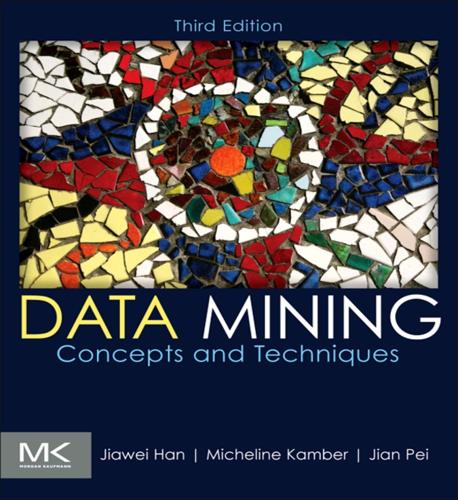
Data Mining: Concepts and Techniques: Concepts and Techniques
by
Jiawei Han
,
Micheline Kamber
and
Jian Pei
Published 21 Jun 2011
., the discovery of relationships among multiple moving objects such as moving clusters, leaders and followers, merge, convoy, swarm, and pincer, as well as other collective movement patterns). Other examples of moving-object data mining include mining periodic patterns for one or a set of moving objects, and mining trajectory patterns, clusters, models, and outliers. Mining Cyber-Physical System Data A cyber-physical system (CPS) typically consists of a large number of interacting physical and information components. CPS systems may be interconnected so as to form large heterogeneous cyber-physical networks. Examples of cyber-physical networks include a patient care system that links a patient monitoring system with a network of patient/medical information and an emergency handling system; a transportation system that links a transportation monitoring network, consisting of many sensors and video cameras, with a traffic information and control system; and a battlefield commander system that links a sensor/reconnaissance network with a battlefield information analysis system.
…
Examples of cyber-physical networks include a patient care system that links a patient monitoring system with a network of patient/medical information and an emergency handling system; a transportation system that links a transportation monitoring network, consisting of many sensors and video cameras, with a traffic information and control system; and a battlefield commander system that links a sensor/reconnaissance network with a battlefield information analysis system. Clearly, cyber-physical systems and networks will be ubiquitous and form a critical component of modern information infrastructure. Data generated in cyber-physical systems are dynamic, volatile, noisy, inconsistent, and interdependent, containing rich spatiotemporal information, and they are critically important for real-time decision making. In comparison with typical spatiotemporal data mining, mining cyber-physical data requires linking the current situation with a large information base, performing real-time calculations, and returning prompt responses.
…
■ Mining social and information networks: Mining social and information networks and link analysis are critical tasks because such networks are ubiquitous and complex. The development of scalable and effective knowledge discovery methods and applications for large numbers of network data is essential, as outlined in Section 13.1.2. ■ Mining spatiotemporal, moving-objects, and cyber-physical systems: Cyber-physical systems as well as spatiotemporal data are mounting rapidly due to the popular use of cellular phones, GPS, sensors, and other wireless equipment. As outlined in Section 13.1.3, there are many challenging research issues realizing real-time and effective knowledge discovery with such data
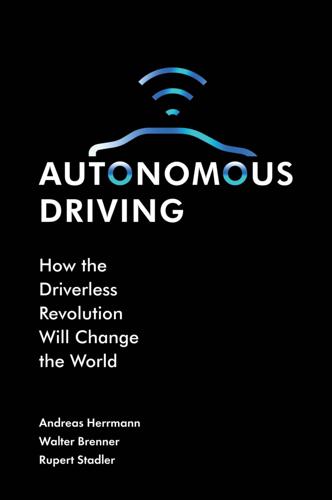
Autonomous Driving: How the Driverless Revolution Will Change the World
by
Andreas Herrmann
,
Walter Brenner
and
Rupert Stadler
Published 25 Mar 2018
The technology of autonomous driving will have a significant role to play in the success of electric mobility. As automation has a positive impact on energy efficiency, increasing vehicle automation will also significantly extend the range of electric vehicles [148]. The essence of autonomous driving is the development of vehicles into cyber-physical systems that comprise a combination of mechanical and electronic components. A vehicle’s hardware and software exchange certain data about the infrastructure (the Internet of Things), and the vehicle is controlled or monitored by a processing unit. In the future, each vehicle will communicate with the infrastructure: parking garages, parking spaces, traffic lights, traffic signs and a traffic control centre (vehicle-to-infrastructure communication or V-to-I).
…
This page intentionally left blank INDEX A9 autobahn in Germany, 134, 135, 407 ACCEL, 324 Accelerating, 8, 22, 27, 59, 78, 91, 122, 295, 296 Access Economy, 344 Acoustic signals, 108 Ad-hoc mobility solutions, 354 Ad-hoc networks, 133 Adaptive cruise control, 4, 51, 72 74, 78, 86, 96, 113, 116, 289, 297, 333 Aerospace industry, 153 Agenda for auto industry culture change, 396 increasing speed, 398 service-oriented business model, 397 398 V-to-home and V-to-business applications, 399 Agile operating models, 330 Agriculture, 154 productivity, 155 sector, 154 157 Air pollution, 27 AirBnB, 311 Airplane electronics, 144 Aisin, 9 Albert (head of design at Yahoo), 228 Alexandra (founder and owner of Powerful Minds), 228 Alibaba Alipay payment system, 372 Alternative fuels, autonomous vehicles enabling use of, 305 Altruistic mode (a-drive mode), 252 Amazon, 138, 141, 311 American Trucking Association, 68 Android operating system, 327 Anthropomorphise products, 290 Appel Logistics transports, 167 Apple, 9, 138, 327 CarPlay, 285 Apple Mac OS, 247 Apple-type model, 323 Application layer, 119 software, 118 Artificial intelligence, 115, 255, 291, 332 333 Artificial neuronal networks, 114 115 Asia projects, 371 374 Assembly Row, 386 Assessment of Safety Standards for Automotive Electronic Control Systems, 144 Assistance systems, 71 77 Audi, 5, 130, 134, 137, 179, 211, 301, 318, 322, 398 Driverless Race Car, 5 piloted driving, 286 piloted-parking technology, 386 387 Audi A7, 44, 198, 282 427 428 Audi A8 series-car, 79, 180 Audi AI traffic jam pilot, 79 Audi Fit Driver service, 318 319 Audi piloted driving lab, 227, 229 Audi Q7, 74 assistance systems in, 75 Audi RS7, 43, 44, 79 autonomous racing car, 179 driverless, 227 Audi TTS, 43 Audi Urban Future Initiative, 384 386, 406 Augmented reality, 279 vision and example, 279 280 Authorities and cities, 171 173 Auto ISAC, 146 Autolib, 317, 344 Autoliv, 285 Automakers’ bug-bounty programs, 146 Automated car, 233, 246, 264, 289, 384 Automated driving division of labour between driver and driving system, 48 examples, 51 53 image, 177 levels of, 47 51 scenarios for making use of travelling time, 52 strategies, 53 56 technology, 160 Automated vehicles, 9, 174, 246 Automated Vehicles Index, 367 368 Automatic car, 233, 244 Automatic pedestrian highlighting, 78 Automation ironies of, 76 responsibility with increasing, 235 Automobile, 3, 21 locations, 405 manufacturers, 311 Index Automotive design, 265 266 Automotive Ethernet, 126 Automotive incumbents operate, 330 Automotive industry, 332 335, 367, 379, 397 Automotive technology, 327 328 AutoNet2030 project, 369 Autonomous buses, 14, 81, 158, 159, 175, 302 Autonomous cars, 25, 126, 197, 205 206, 233, 244, 270 expected worldwide sales of, 85 savings effects from, 67 68 Autonomous driving, 3, 8, 39, 62, 94, 111, 116, 120, 121 123, 141, 160 162, 171, 173, 207 208, 217, 247, 252, 266, 332 333, 379 applications, 10 12, 160 aspects for, 93 Audi car, 5 autonomous Audi TTS on Way to Pikes Peak, 43 in combination with autonomous loading hubs, 166 driving to hub, 213 ecosystem, 18 20, 131 element, 243 facts about, 306 functions, 74 impression, 40 industry, 16 18 living room in Autonomous Mercedes F015, 44 milestones of automotive development, 4 NuTonomy, 6 projects, 41 45 real-world model of, 92 scenarios, 211 215 science fiction, 39 41 technology, 9 10, 92 Index time management, 215 218 vehicles, 12 16 See also Human driving Autonomous driving failure, 221 consequence, 221 222 decision conflict in autonomous car, 223 design options, 222 223 influencer, 223 224 Autonomous Mercedes F015, living room in, 44 Autonomous mobility, 12, 13, 16 17, 172, 405 establishment as industry of future, 404 405 resistance to, 171 172 Autonomous Robocars, 81 Autonomous sharp, 274 ‘Autonomous soft’ mode, 274 Autonomous trucks, 161 from Daimler, 163 savings effects from, 68 69 Autonomous vehicles, 26, 81, 99, 138, 155, 182, 221, 238, 249, 255, 353 354 enabling use of alternative fuels, 305 integration in cities, 406 promoting tests with, 407 uses, 153 AutoVots fleet, 350 Backup levels, 127 Baidu apps, 338, 372 Base layer, 119 Becker, Jan, 42 43 Behavioural law, 234 Being driven, 61, 63, 78, 342 343 Ben-Noon, Ofer, 142, 143, 145 Benz, Carl, 3, 4 Bertha (autonomous research vehicle), 42 Big data, 313, 332 333 BlaBlaCar, 359 429 Blackfriars bridge, lidar print cloud of, 104 Blind-spot detection, 78 Bloggers, 225 227 Blonde Salad, The, 226 Bluetooth, 130, 142, 154 BMW, 6, 130, 137, 174, 180, 316, 320, 322, 332 333, 372, 398 3-series cars, 338 BMW i3, 27 holoactive touch, 285 Boeing 777 development, 243 Boeing, 787, 261 Bosch, 9, 181 182 Bosch, Robert, 333 Bosch suppliers, 315 BosWash, metropolitan region, 384 Budii car, 272 273 Business models, 311, 353 355 automobile manufacturers, 311 content creators, 319 320 data creators, 320 322 examples, 312 hardware creators, 314 315 options, 312 314 passenger looks for new products, 321 passenger visits website, 321 service creators, 316 319 software creators, 315 316 strategic mix, 322 323 Business vehicle, 15 Business-to-consumer car sharing, 342 343 Cadillac, 180 California PATH Research Reports, 298 299 Cambot, 290 Cameras, 111, 126 CAN bus, 126, 143 Capsule, 33 Car and ride sharing, studies on, 348 430 Car dealers, repair shops and insurance companies, 173 174 Car manufacturers, 328, 396 397 business model, 312 Car-pooling efforts, 364 365 Car-sharing programs, 364 365 service, 383 Car-sharing, 206 Car2Go, 317, 345 Casey Neistat, 226 Castillo, Jose, 364 365 Celebrities and bloggers, 225 227 Central driver assistance control unit, 124 Central processing unit, 96, 124 zFAS, 125 Centre for Economic and Business Research in London, 189 Chevrolet, 40 app from General Motors, 316 Spark EV, 27 Cisco, 41 CityMobil project, 369, 406 CityMobil2, 14, 157 Cognitive distraction, 287 Coherent European framework, 246 Committee on Autonomous Road Transport for Singapore, 347 Communication, 198 200 investing in communication infrastructure, 403 404 technology, 261 Community, 341 detection algorithms, 389 Companion app, 316 Compelling force, 223 Competitiveness Iain Forbes, 368 369 projects in Asia, 371 374 Index projects in Europe and United States, 369 371 projects in Israel, 374 375 Computer operating systems, 247 Computer-driven driving, 108 Computerised information processing, 109 Congestion pricing, 296 Connected car, 129 ad-hoc networks, 133 connected driving, 137 138 connected mobility, 138 development of mobile communication networks, 130 digital ecosystems, 138 eCall, 136 137 online services, 136 137 permanent networks, 130 statement by telecommunications experts, 132 133 V-to-I communication, 134 135 V-to-V communication, 133 134 V-to-X communication, 135 136 See also Digitised car Connected mobility, 129, 138 Connected vehicles, 138 vulnerability of, 142 Connected-car services, 313 Connectivity of vehicles, 147 Consumer-electronics companies, 285 Container Terminal, 159 Content creators, 319 320 Continental (automotive suppliers), 9, 284, 315 Continuous feedback, 281 Convenience, 302 304, 306 Conventional breakthrough approach, 332 Index Conventional broadband applications, 132 Conventional car manufacturing, 10 Cook, Tim, 182 Cooperative intelligent transport system (C-ITS), 369 370 Corporate Average Fuel Economy standard, 297 Cost(s), 187 192, 295 autonomous vehicles enabling use of alternative fuels, 305 fuel economy, 297 299 intelligent infrastructures, 299 301 land use, 304 operating costs, 301 302 relationship between road speed and road throughput, 296 vehicle throughput, 295 297 Croove app, 318 Culture, 330 change, 396 differences, 195 197 and organisational transformation, 395 Curtatone, Joseph, 387 Customers’ expectations attitudes, 204 207 incidents, 203 204 interview with 14 car dealers, 207 persuasion, 207 208 statements by two early adopters, 205 Cyber attacks, 141 Cyber hacking or failures in algorithms, 354 Cyber security, 141 146 Cyber-physical systems, 9 Daimler, 130 Data, 121 categories in vehicle, 147 creators, 320 322 431 from passengers, 94 95 privacy, 147 148 processing, 91 protection principles, 148 recorders, 239 Data-capturing technology, 103 Data-protection issues, 239 Database, 98 Decelerating, 91, 122 Decision-making mechanism, 369 Declaration of Amsterdam, 246 247 Deep learning, 115 Deep neural networks, 115 116 Deere, John, 154, 155 Deere, John, 154, 155, 263 Defense Advanced Research Project Agency (DARPA), 41 Degree of autonomous driving, 53 Degree of autonomy, 262 Degree of market penetration, 84 Degree of not-invented-here arrogance, 332 Degree of vehicle’s automation, 233 234 Delhi municipal government, 21 22 Delphi, 9, 181 Delphi Automotive Systems, 6 Demise of Kodak, 111 Denner, Volkmar, 333 334 Denso, 9 Depreciation, 345 Destination control, 299, 300 Digital company development, 395 396 Digital economy, 225 Digital ecosystems, 138 Digital light-processing technology, 277, 279 Digital maps, 101 Digital products, 267 Digitised car algorithms, 113 117 432 backup levels, 127 car as digitised product, 111 112 data, 121 drive recorder, 125 126 drive-by-wire, 122 over-provisioning, 127 processor, 122 125 software, 117 121 See also Connected car Digitising and design of vehicle, 265 267 Dilemma situations, 61 Direct attacks, 141 Direct connectivity of vehicle, 130 Disruptions in mobility, 31, 34 arguments, 34 35 history, 32 33 OICA, 34 Disruptive technologies, 221, 223, 402 Document operation-relevant data, 263 Doll, Claus, 166 Dongles, 142 Drees, Joachim, 165 ‘Drive boost’ mode, 274 “Drive me” project, 370 Drive recorder, 125 126 ‘Drive relax’ mode, 274 Drive-by-wire, 122 DriveNow, 317, 345 Driver, 235 role, 235 238 Driver distraction, 55 causes and consequences, 278 Driver-assistance systems, 53, 71, 160, 174, 222, 298, 333, 353 Driverless cars, 3, 7, 27 28, 222, 233, 244 taxis, 302 vans, 406 vehicles, 168 Index Driverless Audi RS7, 227 229 Driverless Race Car of Audi, 5 Driving manoeuvres, 91 modes, 107 oneself, 342 343 Drunk driving, 303 Dvorak keyboard, 242 Dynamic patterns of movement in city of London, 390 eCall.
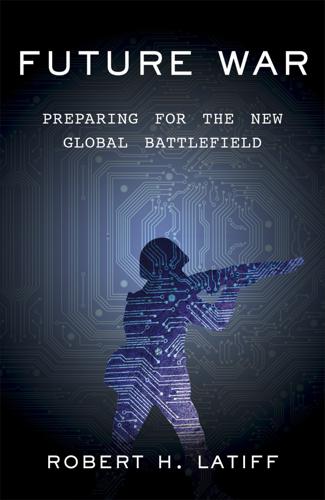
Future War: Preparing for the New Global Battlefield
by
Robert H. Latiff
Published 25 Sep 2017
I saw this in the development of new satellites. What starts out as a reasonable design grows and grows, because of so many desired new features, until the project becomes unworkable, unnecessarily expensive, or even useless upon arrival. The way we’re headed with advanced artificial intelligence, autonomy, and cyber-physical systems seems like more technology seduction. Technology always promises something better, often with an illusion of objectivity. Solving problems seems to require little subjective thought. If we want more performance, we just need more technology. But technology tends to limit our need to think about alternatives.

Fancy Bear Goes Phishing: The Dark History of the Information Age, in Five Extraordinary Hacks
by
Scott J. Shapiro
When people speak about the possibility of “cyberwar,” they usually mean cyber-dependent war. After all, modern military conflict is thoroughly cyber-enabled. Cyber-dependent war, by contrast, doesn’t use computers to control weapons—computers are the weapons. Cyber-dependent war has worried analysts because “cyber-physical” systems—systems that use computers to control physical devices so as to maximize efficiency, reliability, and convenience—have become commonplace. The Internet of Things that Mirai exploited is a cyber-physical internetwork, as are industrial control systems used in power plants, chemical processing, and manufacturing, which were exploited by Stuxnet.
…
-Iran interchange how strong states use weapons differently than weak ones. Strong states treat cyberweapons as one more tool in their arsenal, the choice of which depends on the tactical needs of any military operation. Since stealth is a benefit of cyberweapons, the United States secretly infiltrated the cyber-physical system at the Natanz nuclear facility with Stuxnet to slow the Iranian development of nuclear weapons. For weak states, however, cyberweapons usually are the arsenal. These states rarely have the ability to launch ground invasions or air strikes against their rivals. Weak states are normally limited to cyber-dependent war.
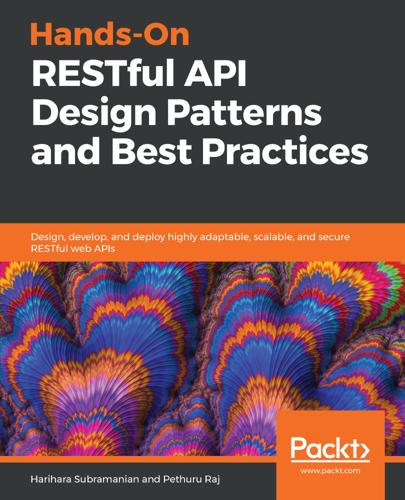
Hands-On RESTful API Design Patterns and Best Practices
by
Harihara Subramanian
Published 31 Jan 2019
The next question is how to enable software-defined and -driven systems to find one another in order to initiate fruitful collaborations. APIs have emerged as the mechanism to assist in facilitating seamless and spontaneous device integration. RESTful services and APIs are the prominent and dominant method for enabling device-to-device (D2D) and device-to-cloud (D2C) integration capabilities. The grandiose vision of cyber-physical systems (CPS) is to get nourished and then flourish with the smart application of RESTful methods. Software-enabled clouds for the digital intelligence era As outlined previously, the role and responsibility of software is on the climb. The software is participative, pervasive, and persuasive, too.
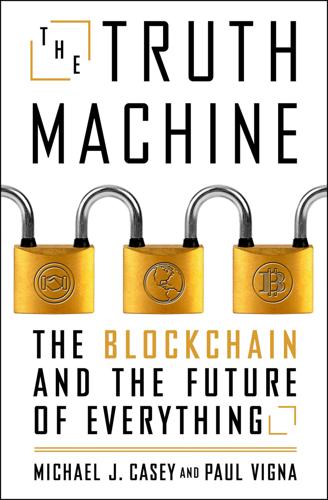
The Truth Machine: The Blockchain and the Future of Everything
by
Paul Vigna
and
Michael J. Casey
Published 27 Feb 2018
It’s another thing entirely if it can be hacked to allow a burglar to open the door—or prevent you from opening your door. A hacker who can deny you control of your car, or take over control, is much more dangerous than one who can eavesdrop on your conversation or track your car’s location.” With the Internet of Things and other such “cyber-physical systems,” Schneier said, “we’ve given the Internet hands and feet: the ability to directly affect the physical world. What used to be attacks against data and information have become attacks against flesh, steel, and concrete.” Making matters worse is the challenge people face in upgrading software to their devices; we have a hard enough time keeping up with Microsoft’s and our app providers’ security patch updates on laptops and smartphones, let alone having to update the software on our Internet-connected fridge.
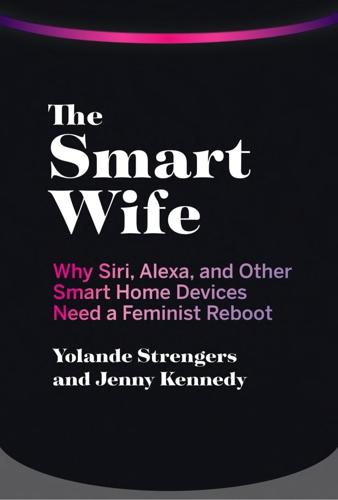
The Smart Wife: Why Siri, Alexa, and Other Smart Home Devices Need a Feminist Reboot
by
Yolande Strengers
and
Jenny Kennedy
Published 14 Apr 2020
What we are concerned with here is making sure that smart wives are recognized, first and foremost, as the mass social experiment that they are. This stance echoes Bell’s vision for AI. At the 3Ai Institute at the Australian National University, Bell is establishing a new discipline or applied science “to enable the safe, ethical and effective design, integration, management and regulation of cyber-physical systems.”19 While not explicitly a social science, this new discipline has the social sciences at its core (Bell herself, you may recall, is an anthropologist). Similarly, UNESCO and the EQUALS Skills Coalition call for “transdisciplinary, critical and ethical thinking about technology” to develop gender-responsive approaches to digital skills development.

Stakeholder Capitalism: A Global Economy That Works for Progress, People and Planet
by
Klaus Schwab
and
Peter Vanham
Published 27 Jan 2021
But throughout the world, including in our time, many others also protested new technologies and the new ways of working they promoted, whether through street protests against ride-hailing firms such as Uber or intellectual protests by politicians2 or academics3 in media. I too share the concern over the future of work in this era of automation. Back in 2015, I realized we were at the dawn of a new era—one of artificial intelligence, advanced robotics, and integrated cyber-physical systems—and that together they constituted a Fourth Industrial Revolution. The new technologies we were witnessing, including also 3D printing, quantum computing, precision medicine, and others, I came to believe, were on par with that of the First Industrial Revolution—the steam engine—those of the Second Industrial Revolution—the combustion engine and electricity—and that of the Third Industrial Revolution—information technology and computing.

Stakeholder Capitalism: A Global Economy That Works for Progress, People and Planet
by
Klaus Schwab
Published 7 Jan 2021
But throughout the world, including in our time, many others also protested new technologies and the new ways of working they promoted, whether through street protests against ride-hailing firms such as Uber or intellectual protests by politicians2 or academics3 in media. I too share the concern over the future of work in this era of automation. Back in 2015, I realized we were at the dawn of a new era—one of artificial intelligence, advanced robotics, and integrated cyber-physical systems—and that together they constituted a Fourth Industrial Revolution. The new technologies we were witnessing, including also 3D printing, quantum computing, precision medicine, and others, I came to believe, were on par with that of the First Industrial Revolution—the steam engine—those of the Second Industrial Revolution—the combustion engine and electricity—and that of the Third Industrial Revolution—information technology and computing.
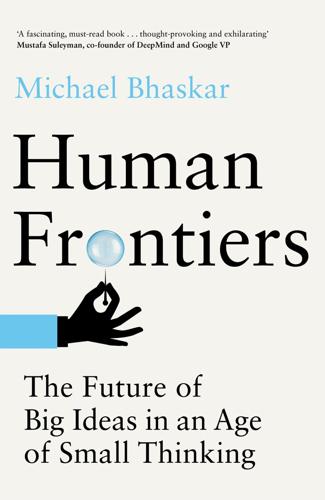
Human Frontiers: The Future of Big Ideas in an Age of Small Thinking
by
Michael Bhaskar
Published 2 Nov 2021
We will return to this later, but it's worth remembering that the 4IR is as much a marketing gimmick of the World Economic Forum, which coined the term, as it is a coherent concept. The 4IR is less a historical fact, more a loosely assembled set of conference talking points notionally about ‘cyber-physical systems’, a handy label for a basket of potentially transformative but still nascent technologies that face a host of technical, ethical and social barriers. In the meantime innovation has been directed at ways to order pizza or take better selfies; the softest frontiers around. To be fair, Google Maps, Zoom, Minecraft, Spotify – these are marvels and big ideas that have found purchase, and digital is the bright spot.
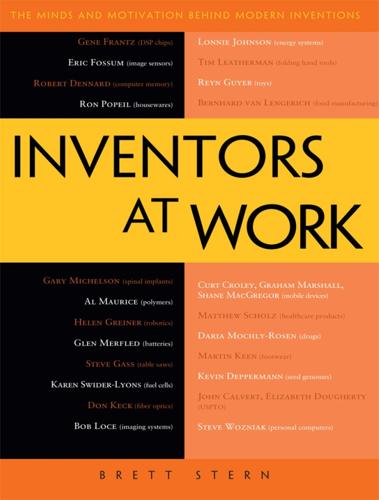
Inventors at Work: The Minds and Motivation Behind Modern Inventions
by
Brett Stern
Published 14 Oct 2012
I was making just the kind of things eleven-year-olds would make: video games, space invaders, keyboard races, etc. Stern: Jumping forward, could you define the technology or your inventions in technical terms, and then define them in layperson’s terms? Greiner: I like to build integrated robot systems, or “cyber-physical systems,” that are able to negotiate unstructured environments using dynamic sensing and onboard intelligence. Robotics encompasses many of the other disciplines, like artificial intelligence, dynamic sensing, and electrical engineering. You’d be hard-pressed to come up with an area that robotics doesn’t use.
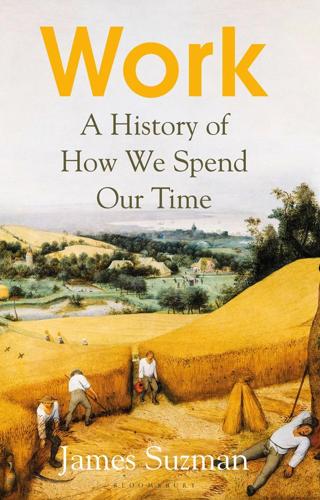
Work: A History of How We Spend Our Time
by
James Suzman
Published 2 Sep 2020
Now we are in the midst of a fourth industrial revolution, born of the union of a host of new digital, biological and physical technologies, and we are told that it will be exponentially more transformative than its predecessors. Even so, no one is yet quite sure how it will play out, beyond the fact that ever more tasks in our factories, businesses and homes will be undertaken by automated cyber-physical systems animated by machine-learning algorithms. For some, the prospect of an automated future heralds an era of robotic convenience. For others, it is another fateful step on the journey towards a cybernetic dystopia. But for many, the prospect of an automated future raises only one immediate question: what will happen if a robot takes my job?
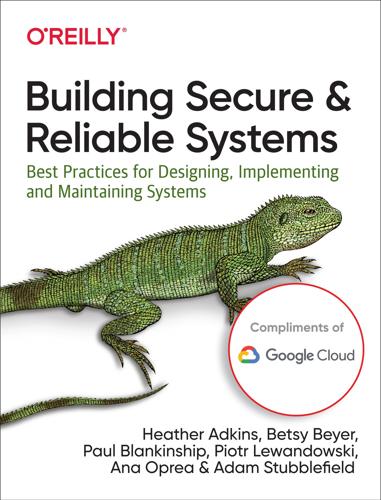
Building Secure and Reliable Systems: Best Practices for Designing, Implementing, and Maintaining Systems
by
Heather Adkins
,
Betsy Beyer
,
Paul Blankinship
,
Ana Oprea
,
Piotr Lewandowski
and
Adam Stubblefield
Published 29 Mar 2020
CppCon 2015. https://oreil.ly/idleN. 4 See Chapter 2 of the SRE workbook. 5 The fuzz target compares the results of two modular exponentiation implementations inside OpenSSL, and will fail if the results ever differ. 6 For an example, see Bozzano, Marco et al. 2017. “Formal Methods for Aerospace Systems.” In Cyber-Physical System Design from an Architecture Analysis Viewpoint, edited by Shin Nakajima, Jean-Pierre Talpin, Masumi Toyoshima, and Huafeng Yu. Singapore: Springer. 7 You can install Clang-Tidy using standard package managers. It is generally called clang-tidy. 8 See Sadowski, Caitlin et al. 2018. “Lessons from Building Static Analysis Tools at Google.”